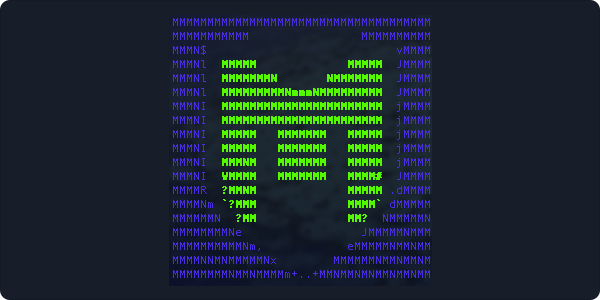| Early Chess Programs at MIT | ||
| 1957–1958 | routines by John McCarthy and Paul W. Abrahams[1] | IBM 704 |
|---|---|---|
| 1959–1962 | Kotok-McCarthy | IBM 7090 |
| 1965–1967 | The Greenblatt program (Mac Hack) | |
- Oct 17, 2018 The first difference is in the terms of the price. A PC with better configuration than a Mac would cost only a fraction of the former. Secondly, you could update your PC completely whenever you want. On the other hand, when it comes to upgradability, Mac only offers memory and hard drive updates natively which isn’t the case with a PC.
- This tutorial will show you how to hack your SNES Classic Mini on your Apple computer running MacOS. Mac users can now use hakchi2 to add more games, play different consoles, and much more on their Classic. This tutorial will guide you step-by-step on how to install a free Windows VM to your Mac and set it up so you can begin hacking.
Dec 12, 2013 Need help bypassing DyKnow in school? My teachers block me from other applications in school, I'm not trying to play games or anything. I'm usually trying to complete missing work. If I'm quick enough, I can disconnect from the wifi before the teacher has time to block us, but sometimes when I connect back. I'm automatically blocked again.
Mac Hack is a computer chess program written by Richard D. Greenblatt. Also known as Mac Hac and The Greenblatt Chess Program, it was developed at the Massachusetts Institute of Technology. Mac Hack VI was the first chess program to play in human tournament conditions, the first to be granted a chess rating, and the first to win against a person in tournament play.
Its name comes from Project MAC ('Multi-Level Access Computer' or 'Machine-Aided Cognition'[2]) a large sponsored research program located at MIT. Over time, it became a hack in the sense of Hackers: Heroes of the Computer Revolution,[3] a book by Steven Levy in which Greenblatt appears. The number VI refers to the PDP-6 machine for which it was written.
Development[edit]
Greenblatt was inspired to write Mac Hack upon reading MIT Artificial Intelligence Memo 41,[4] or a similar document describing Kotok-McCarthy, which he saw while visiting Stanford University in 1965. A good chess player, he was inspired to make improvements at MIT in 1965 and 1966.[5]
In about 2004, he had an opportunity to tell Alan Kotok that searching the 7 best moves at each of the first two plies, and limiting the search depth to 2 would have done better than the default widths of '4 3 2 2 1 1 1 1', attempting 8 plies in Kotok-McCarthy's REPLYS subroutine which generated each player's next plausible moves.[6]
Greenblatt added fifty heuristics that reflected his knowledge of chess. Mac Hack was written in MIDAS macro assembly language on the PDP-6 computer DEC donated to MIT (the first working PDP-6, serial number 2). Many versions may exist. During this period the program was compiled about two hundred times.
Tournament play[edit]
By the time it was published in 1969 Mac Hack had played in eighteen tournaments and hundreds of complete games. The PDP-6 became an honorary member of the Massachusetts State Chess Association and the United States Chess Federation,[7] a requirement for playing tournaments. In 1966 the program was rated 1243 when it lost in the Massachusetts Amateur Championship. In 1967, the program played in four tournaments, winning three games, losing twelve, and drawing three. In 1967 Mac Hack VI defeated Ben Landy with a USCFrating of 1510 in game 3, tournament 2 of the Massachusetts State Championship.[5][8]
Greenblatt published the program with Donald E. Eastlake III and Stephen D. Crocker in MIT Artificial Intelligence Memo 174 and recorded some games there.[9]
Dyknow Mac Hack 2017
Influence[edit]
Mac Hack played by teletype, was ported to the PDP-10 and was the first computer chess program to be widely distributed.[10] Mac Hack was the first chess computer to use a transposition table, which is a vital optimization in game tree search. Greenblatt and Tom Knight went on to advance artificial intelligence and build the Lisp machine in 1973.[11]
Dyknow Mac Hacks
References[edit]

- ^McCarthy, John (1996). 'LISP prehistory - Summer 1956 through Summer 1958'. Retrieved 9 December 2006.
- ^Snover, Janet and Bill Litant (n.d.). 'Acronyms and Abbreviations Used at MIT'. Massachusetts Institute of Technology. Retrieved 29 December 2006.
- ^Levy, Steven (2 January 2001). Hackers: Heroes of the Computer Revolution. Penguin (Non-Classics). ISBN0-14-100051-1.:
- Hackers: Heroes of the Computer Revolution by Steven Levy at Project Gutenberg
- ^*Kotok, Alan (n.d.). 'A Chess Playing Program (AIM-41 - PDF)'(PDF). Massachusetts Institute of Technology. Retrieved 26 December 2006.
- ^ abGreenblatt, Richard D. (12 January 2005). 'Oral History of Richard Greenblatt'(PDF). Computer History Museum. Retrieved 1 July 2006.Cite journal requires
|journal=(help) - ^Hendrie, Gardner (12 January 2005). 'Oral History of Richard Greenblatt'(PDF). Computer History Museum. Retrieved 6 April 2016.
- ^LEVY, D. (29 June 2013). Computer Chess Compendium. Springer Science & Business Media. ISBN9781475719680.
- ^Levy, David N. L. (6 December 2012). Computer Games I. Springer Science & Business Media. ISBN9781461387169.
- ^'The Greenblatt Chess Program'(PDF). Massachusetts Institute of Technology. Richard Greenblatt, Donald Eastlake III, Stephen Crocker. April 1969. Retrieved 6 April 2016.
- ^'A history of computer chess - from the 'Mechanical Turk' to 'Deep Blue' - High Tech History'. Retrieved 6 April 2016.
- ^'Richard Greenblatt and Thomas Knight with the CADR LISP Machine at MIT'. www.computerhistory.org. Retrieved 6 April 2016.
Notes[edit]
- Photo: Richard Greenblatt and Thomas Knight with the CADR LISP Machine at MIT, Unknown photographer. Courtesy of MIT. (1978). 'Computer History Museum accession number L02645385'. Retrieved 29 December 2006.
- Pearson Education, Addison-Wesley Professional (2006). 'Donald E. Eastlake'. Retrieved 26 December 2006.
- Computer History Museum (n.d.). 'Opening Moves: Origins of Computer Chess: 2.4 Getting Going'.